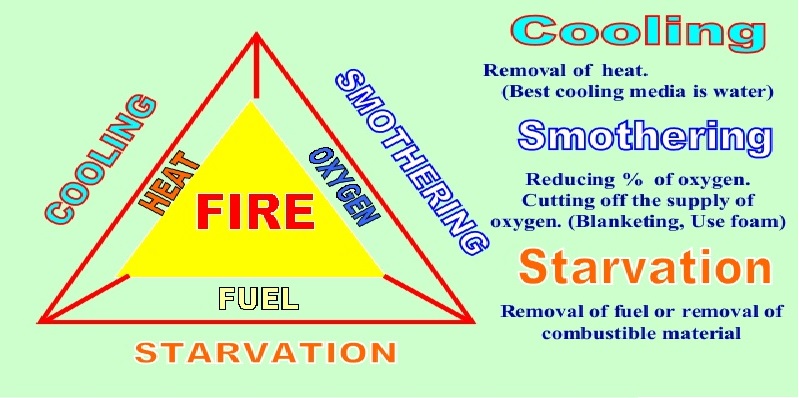To understand how best to extinguish a fire, there must first be an appreciation of the three elements that make up the ‘fire triangle’: heat, fuel and oxygen. As fire is primarily a chemical reaction, removing one or more of these three factors will prevent the combustion from taking place.
Heat is require d to ignite a fire, and will continue to be generated as the fire burns. For intentional fires, this could
be as simple as the striking of a match. For accidental fires however, ignition can occur as a result of obstructing ventilation on machinery that heats up, or flammable materials being too close to heaters.
Fuel can be anything that is combustible, such as wood, petroleum and spirits, and a number of gases. Solid fuels must reach a critical temperature in order to ignite, while many liquids release flammable vapours even when cold. Gases are the most hazardous and temperamental state, and can combust instantaneously.
The air feeding a fire only needs to be made up of 16% Oxygen in order to react with the heat and fuel. Generally, at low/normal altitude, the level is over 20%.



